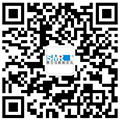Scene-setter: A lipstick purchase goes sideways
In a live-stream, the host holds up a “YSL Slim Matte” bullet, RMB 89 with free shipping. You smash the buy button; three days later you unwrap—metal case feels feather-light, scent has shifted from faint flowers to cheap birthday-cake. Doubt: is it real? Safe for skin? Returnable?
Our just-released 2025 Cross-border Consumer Cognition Survey shows:
• 55 % “accidentally” bought infringing goods;
• Only 12 % can list ≥3 ways to spot a fake;
• <8 % ever bother to verify on the brand site.
In short: “What does a fake look like?”—half of shoppers truly have no idea.
I. Why Can’t We See? Five “Smoke Screens” Dissected
-
Visual Screen: 95 % look-alike packaging
• Pantone shade off by 5 %, an extra 2 mm line of micro-text;
• 3-D scan + budget laser engraving keeps logo depth within 0.1 mm of genuine.
-
Price Screen: “Reasonably cheap” is irresistible
Anchoring effect: MSRP 320 → live-room 129; brain auto-labels it “bargain,” risk radar offline.
-
Context Screen: comment zone screams “all authentic”
20 000 brushed reviews gush “real deal,” negatives buried. Social proof = “everyone buys it = can’t be fake.”
-
Knowledge Screen: information gap on how to check
Cosmetics: no filing number? Don’t know where to look.
Electronics: serial-number check? Never heard of it.
“Can’t check” = “can’t see.”
-
Mind Screen: self-talk “I can’t be that unlucky”
63 % admit a “maybe it’s fake” flicker before payment, then silence it with “probably fine.”
II. How Common Is Accidental Buying? Three Hard Datasets
Platform refund tags
Top cross-border marketplace Q4-2024: 7.8 % of refunds tagged “suspected counterfeit,” up 1.4× YoY.
Brand hotline stats
Leading Chinese beauty group: 1 100 “help me check authenticity” calls daily; 78 % confirmed infringing.
Customs “Dragon-2025” blitz
March alone, Guangzhou postal channel seized 53 000 infringing pieces; 54 % were “personal-use” parcels—buyers often clueless.
III. Real-vs-Fake Face-off: Showing “Looks Real” to the Eye
Design
• 800 subjects, 18-45, gender-balanced;
• Blind shelf: 10 products (lipstick, earphones, sneakers, handbag, sunscreen), 5 real / 5 fake, random order;
• Eye-tracker + micro-expression coding;
• 15-second “spot the authentic” task.
Results
-
Overall hit-rate: 46 %—worse than a coin flip;
-
Text-area gaze time: 0.3 s; colour + shape grab 90 % of attention;
-
Wrong-pickers’ post-confidence (7.2/10) > right-pickers (6.4/10)—“the surer you feel, the harder you fall.”
IV. Why So Cocky? A Parade of Cognitive Biases
Bias Manifestation Survey data
Anchoring Low price = bargain 67 % “price hooked me first”
Social proof Live-chat floods “authentic” 72 % checked comments
Illusion of knowledge Read a few “how to spot” posts → self-declared expert 58 % “I know the game” yet picked fake
Optimism bias Bad luck won’t hit me 63 % “never thought I’d get a fake”
“Can’t see” + over-confidence = fertile soil for fakes.
V. Self-Protection Tech: Brands Pile on “Fingerprints”
Physical
• 3-D micro-engraving: 0.05 mm pore array, AI-verifiable with phone macro;
• Colour-shift ink: hidden QR appears under 365 nm UV.
Digital
• Blockchain trace: scan writes time, place, reseller—tamper-proof;
• Dynamic serial: first scan logs on-chain; second scan warns “already verified.”
Biological
• Plant DNA tag in cosmetics, detectable at 0.1 ppm by PCR—invisible to magnifiers, glaring to lab gear.
But even the flashiest tech fails at the last mile: consumers too lazy to verify.
VI. 48-hour “Flash Audit”: Turning “Can’t See” into Court-Ready Proof
When a brand wants to sue a platform store, it needs quantified “consumer confusion.” Our 2-day playbook:
-
Buy & notarise
Snap up 50 orders, full notarial video, unbox → authenticate → obtain expert report.
-
Street 5-second pop test
200 passers-by, 5-second glance at product, record “real / fake” call → compute mis-identification rate.
-
E-commerce sentiment scrape
Crawl 90 days of store reviews, NLP-model extracts “suspect fake” keyword share.
Deliverable: 68 % mis-ID + 22 % negative keywords + notarised tests = airtight “market confusion” chain, already accepted in three admin complaints.
VII. 5-second “Flash-Check” List for Shoppers
Step Action Time
① Price <30 % off official site = red flag 1 s
② Weight Genuine moulds use heavier metal 1 s
③ Filing Cosmetics → scan in NMPA app 2 s
④ Serial Electronics / sneakers → key in brand site 1 s
⑤ Receipt Insist on formal invoice + tax ID 0.5 s
Total = 5.5 s—shorter than one TikTok swipe.
VIII. A 3-step “Anti-Fog” Battle-plan for Brands & Lawyers
-
Educate in visuals
Turn the 5-second list into one poster + 15-second clip, blast across all touch-points until consumers can recite it.
-
Monitor in real time
Spider + AI sentiment catch “suspected fake” chatter within 24 h, pinpoint store, batch, keywords.
-
Evidence bundle
Notarised purchase + pop-test + sentiment report, delivered in 7 days, quantifies “irreparable harm” for injunctions or damages.
Closing thought
A fake is not just “poor quality”; it is a 3-D sneak-attack on consumer attention, brand equity and platform trust. As counterfeit tech races ahead, “can’t see” becomes the default; “can see” becomes the competitive edge.
#AntiCounterfeit #ConsumerInsight #BrandProtection

